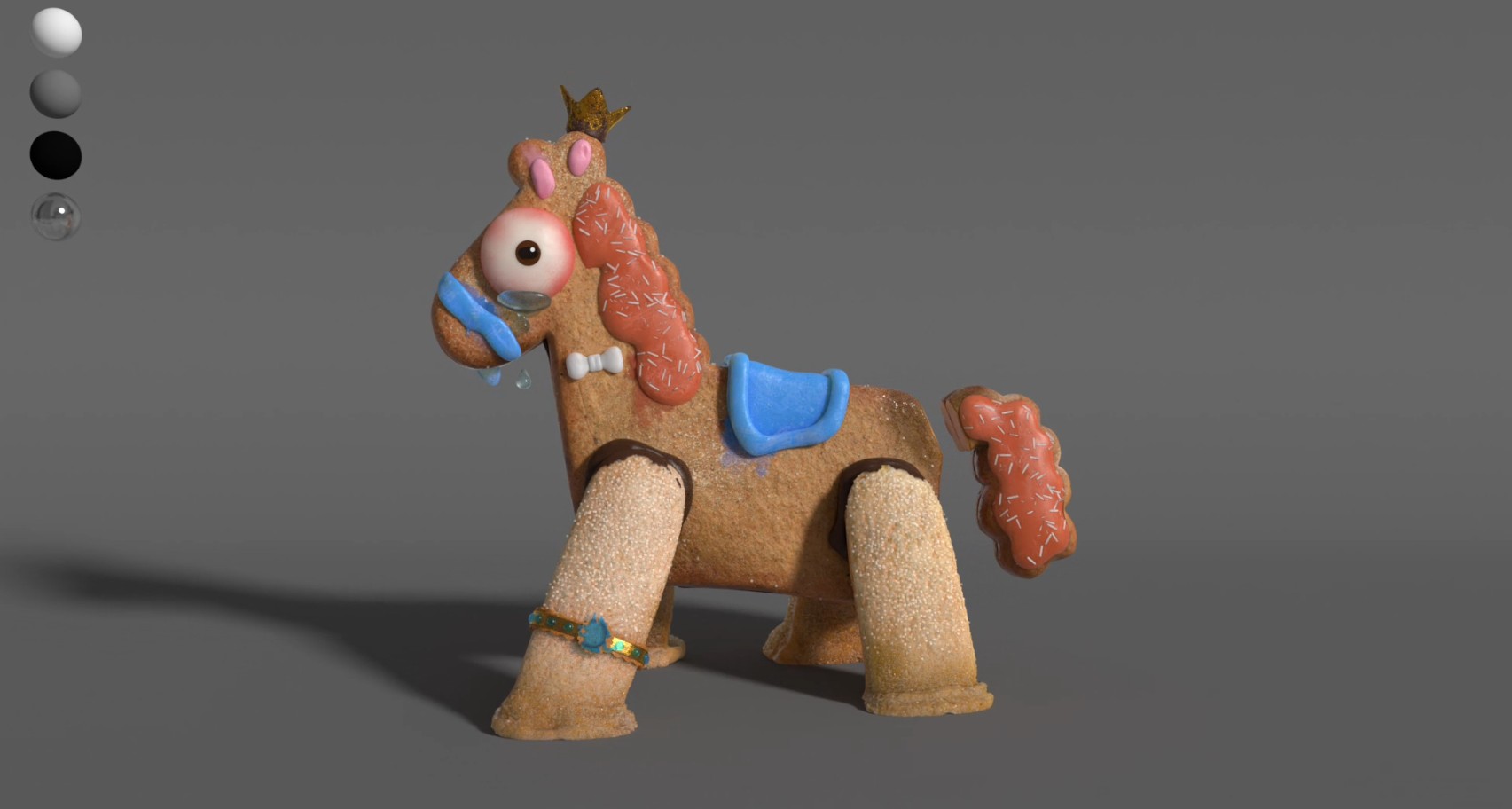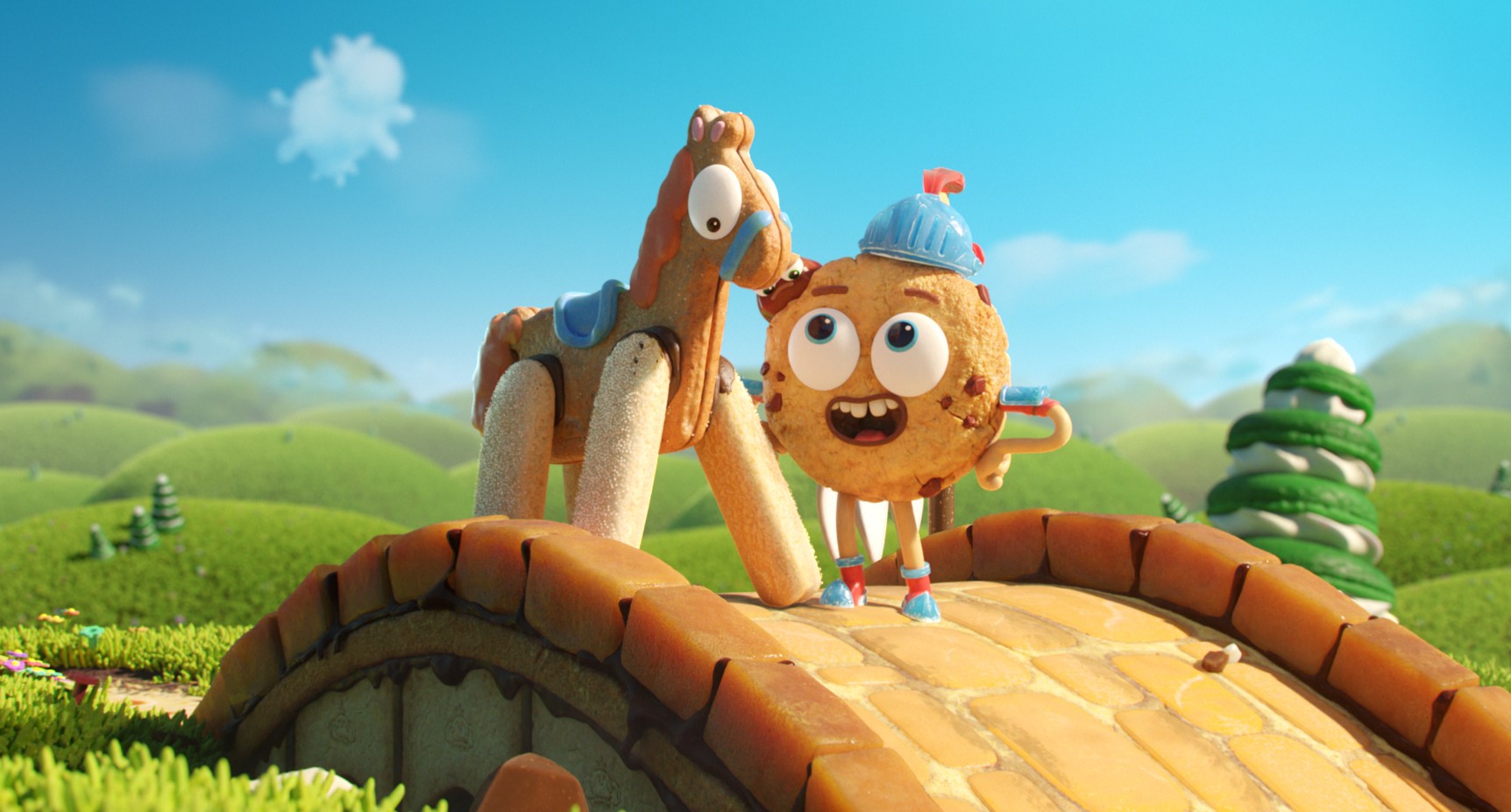A poetic short film
Produced by eight students from ESMA Nantes, A Cookie’s Adventure first won the Audience Award at the ESMA Graduation Show 2022, before being selected for several dozen international festivals, from France to the Netherlands, the United States, Portugal and Belgium.
Winner of numerous awards, including the Rookie Excellence Award, the Best Short Award at Kinolub and the Best Student Short at the Cortoons festival, A Cookie’s Adventure is a nugget we can’t wait to try again to learn more about its secrets.
We had the pleasure of talking behind the scenes with Jérémie Amicone, co-director and co-initiator (with Ileana Borzan) of the project.

How did this film come about, what was the original idea, and how has it evolved over time?
It all started with a simple situation. My flatmate Ileana had got it into her head to bake cookies, and I laughed and said, “It might be funny to make a film with cookies as characters. Our project grew out of this joke, even if the world we had envisaged was a long way from what short films offer today.
Our very first version was actually about a biscuit trying to escape from a pastry shop. Then the project evolved into something more cartoony, with a succession of trials to choose the future husband of a king’s daughter. Finally, after many adjustments, particularly to the characters and their place in the story, we ended up with the story as it is today.
Boubou, Dimitri’s horse, now plays a central role in the film, whereas initially he disappeared very quickly. What a Boubou!

What guided you in your narrative and aesthetic choices?
Despite the short format, which limits the possibility of developing a plot as dense as that of a feature-length film, we were keen to establish a solid narrative around a clear red thread, with trials to overcome and real development arcs for our characters.
From an aesthetic point of view, we wanted to aim for a realistic rendering without falling into the imitation of stop-motion, which might have been a natural temptation since our world is based on real, existing pastry-making elements.

So our challenge was to create a believable world, made of biscuits, while giving it a cartoony, 3D dimension. We wanted the viewer to be able to fully embrace our world, and that’s how we built our protagonists too.
Can you tell us about the creation of these?
It was a real challenge. We had to remain faithful to the nature of a biscuit and other food elements, while at the same time creating characters that were endearing and expressive enough to reflect the energy and craziness of cartoons.
This work was particularly interesting for our hero Dimitri and his friend Pépite, reunited in the same body.
The main challenge was to find the right balance, so that each could fully exist, and so that the personality of both could be seen through their design.
It was a real challenge. We had to remain faithful to the nature of a biscuit and other food elements, while at the same time creating characters that were endearing and expressive enough to reflect the energy and craziness of cartoons.
One of our major influences was Sponge Bob, a very cartoony character with exaggerated facial expressions and great freedom of movement. We were also inspired by series like Gumball, which share the same visual and expressive energy. However, the aim was not to reproduce these worlds, but rather to draw inspiration from them to develop our own visual identity, capable of conveying the humour, madness and unique personality of our heroes.
When it comes to writing, and the slightly piquant humour, we should look to Shrek, Dungeon of Naheulbeuk and Two Minutes of the People for our influences.
Managing the number of characters (we have twelve, most of whom play an essential role in the story) was also a challenge. The aim was to make each of them unique and memorable, while maintaining the visual coherence that gives meaning to the universe.
We wanted each character, even with a short amount of screen time, to leave a lasting impression on the viewer, whether they were endearing, terrifying, funny… or sometimes all at once. This meant working on facial and body expressions.
We paid particular attention to the eyes, because it is the eyes that convey the emotions and allow the viewer to immediately understand a personality, or a status, such as that of the king.
How did you define the world of the film?
Our aim was to create a vast, open universe that gives the impression that it exists far beyond what you see on screen. We wanted the viewer to think: “This world doesn’t end here, there must be other characters, other places, other stories”.
The idea was to convey that feeling of infinity that makes you want to explore further.
What were the main technical difficulties encountered?
In terms of the project itself, I’d say that the decision to work on a short film that was entirely dialogue-based certainly added a new level of difficulty. We had to find dubbers, rewrite the scripts over and over again, which was no easy task with our twelve characters, in parallel with a 3D production. But we managed in the end, thanks in no small part to some incredible professional actors, some of whom are internationally renowned!
In terms of production, the set area that gave us the most trouble was undoubtedly the mermaid swamp. It was one of the most complex environments to design, and we hesitated for a long time about what atmosphere to give it.
Initially, we were thinking of something dark and oppressive, but that was too far removed from the general world of the film. In the end, we opted for a much more assertive and offbeat approach, inspired by an extravagant cabaret with drag queen overtones, in keeping with our two singing mermaids.

Once this direction was found, everything came together more naturally. The only downside was that managing the liquid element, here transformed into hot chocolate, represented a real technical challenge. The texture of a liquid in constant movement, with its nuances of colour, was difficult to convey accurately. Despite these constraints, we are very satisfied with the final result.
It’s true that on the technical and 3D fronts, we were always able to rely on each other within the team. There were always solutions to be found internally, and we were able to exchange ideas effectively, both within our group and with the other teams.
And as they say, Google is your friend: when we were lacking knowledge, all we had to do was look it up and we’d end up with the answer. At the time, we didn’t yet have ChatGPT, so we worked the old-fashioned way!
How did you go about allocating roles and working as a team?
We had two main areas: one part of the team dealt with modelling, rendering, lighting and compositing, while the other concentrated on rigs and animation. At the same time, we all worked together on the script and dialogue. Finally, the design was handled by the drawing team.
Looking back, I think everyone found their place in the project, and that’s certainly what helped it run so smoothly. We never really had the feeling that the film wouldn’t see the light of day or that the project would fail. Of course, there were times when we were afraid of having to remove certain elements or rearrange certain scenes, but in the end it was always for the best, to make the film more effective and interesting.

It may sound cliché, but teamwork was essential to the success of this project. We all pulled together, even though everyone had their own speciality and defined tasks.
We always knew how to communicate, listen to each other and find solutions together. It was really teamwork that carried the project through, and that’s priceless. Without this crazy team, we’d never have been able to pull it off.
What are you most proud of today when you revisit this project?
What makes me most proud is that we managed to keep all our original ideas, without having to remove any characters, and that the story remains clear and understandable. The final result is exactly what we wanted, and to be able to see it again several years later and still be proud of it is a real satisfaction.
We’ve also received an enormous amount of positive feedback, both from friends and family and from the many international festivals where the film has been shown. It’s always moving to see this ‘baby’ grow up and chart its own course. Personally, I’m very proud of what we’ve achieved. One piece of feedback that particularly impressed us was the double-page spread devoted to the project in 3D World magazine. Seeing our work exposed in a major international magazine was an incredible and very gratifying experience.
What advice would you give to students making films today?
The biggest piece of advice I could give is to have fun and enjoy your project. Even if it’s stressful, try to make the most of every moment and live the project to the full, without letting the pressure overwhelm you. Love your characters, and invest yourself fully in your film.
In your career, you may never have the opportunity to make so many creative decisions on a project, so put your heart into it. You won’t regret it, and your film will thank you for it. King Cookie’s word!
Discover the film A Cookie’s Adventure, available in its entirety on the ESMA Movies YouTube channel:
